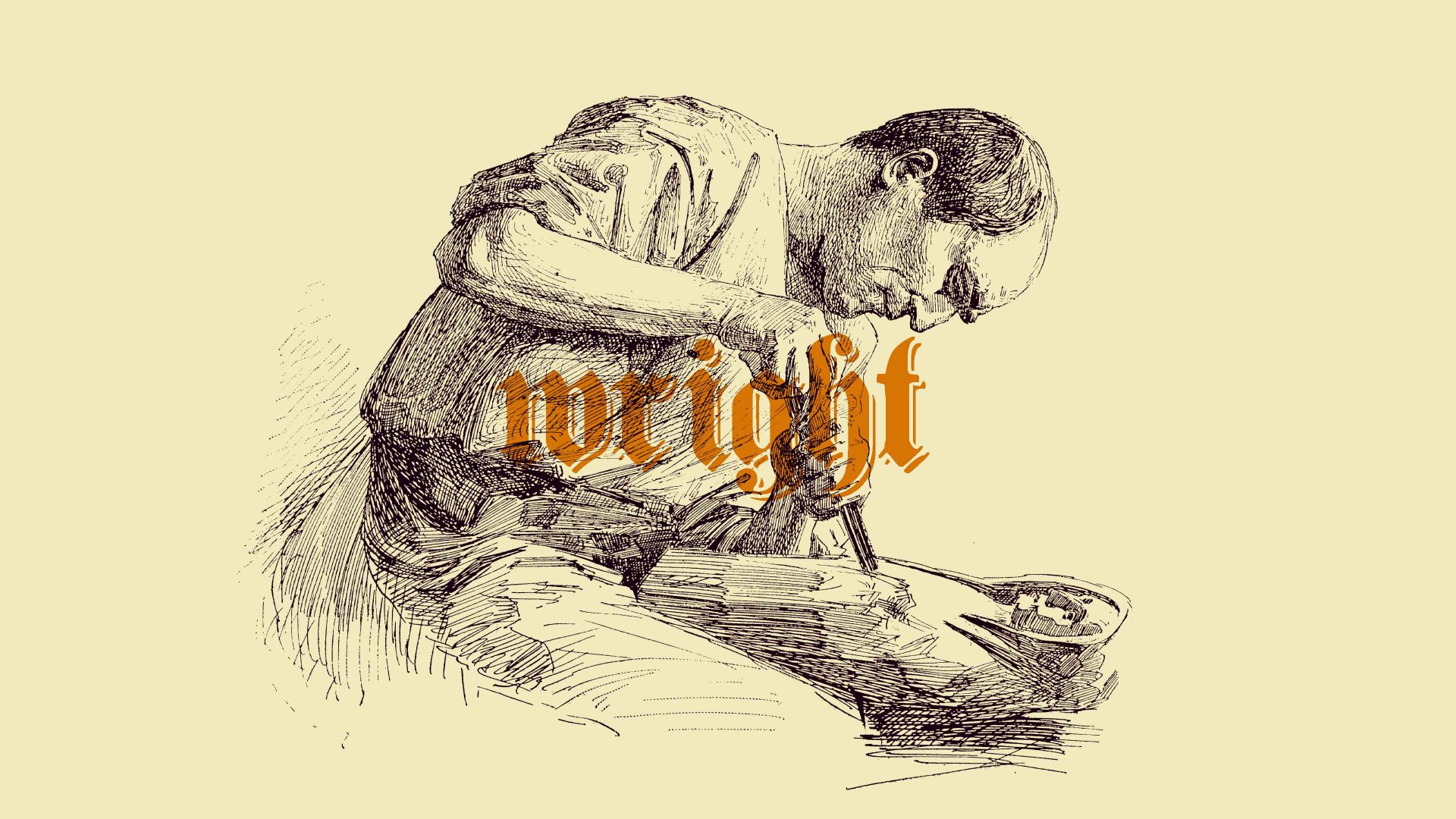When we were first learning to read and write at junior school, aged five, six and seven, the difficulties of distinguishing between how to spell the words right and write were exacerbated for me by the fact that, just down the road from where I lived at no 5, there lived, at no 15, a family called the Wrights.
So even though, at that time, I was not familiar with the word rite, there were still three different spellings of this particular syllable for me to get to grips with. I admired Mr Wright a great deal because he was a bus driver, even if his neighbour was something even better – an engine driver on the railways – and I did in the end get the different spellings sorted out.
Mr Wright was the dignified bearer of a very ancient English occupational name meaning “skilled worker”, which by the Middle English period had most often come to mean “carpenter”, but also “builder, architect”. The word is historically related to the word work and to its archaic past tense form wrought.
It derives from Old English wryhta, wrihta “worker”, which was a variant of an earlier form wyhrta “maker”, from wyrcan “to work”. The w and the r in these words got changed around in a process known to linguists as metathesis, something which not infrequently happened to groups of consonants involving an r, as in the case of third and thirty deriving from the numeral three.
Suggested Reading


When learning languages becomes a stress test
Wright, then, was a common West Germanic word giving Old Saxon wurhito, Old Frisian wrichta, and Old High German wurhto. In Modern English it is preserved mostly in compounds such as wheelwright and playwright as well as in surnames. It survives particularly strongly today as a part of certain originally occupational compound family names such as Cartwright, and Arkwright. These names referred respectively to manufacturers of carts; “arks”, which were chests, boxes and coffers; and “wains” or waggons. Constable’s famous painting The Hay Wain is a picture which includes a hay cart or waggon: waggon and wain are historically basically the same word deriving from the same source (with waggon and wagon being respectively the most usual British and American spellings of this word).
It has been argued that wain had largely fallen into obsolescence by the 17th century but was kept alive by poets “who perhaps found it easier to find rhymes for wain than for wagon. So “Wainwright” indicated a craftsman whose job it was to make waggons. Probably the most famous British person with the surname Wainwright was Alfred Wainwright, who died in 1991. He came from Blackburn in Lancashire and was a fell-walker, guidebook author and illustrator.
His seven-volume work A Pictorial Guide to the Lakeland Fells, which was published in the years between 1955 and 1966, famously consisted entirely of reproductions of his own hand-written manuscripts, and hand-drawn sketches and maps.
A “Wainwright” is one of the 214 peaks in the English Lake District which were specifically described in Wainwright’s influential books. The hills, which were mostly over 1,000 ft high, were selected by Wainwright for what he felt to be their unique appeal and character. The term “Wainwrights” is often used by devotees to refer to the popular activity of “Wainwright bagging”, in which walkers aim to reach the tops of all the peaks.
Fell
The originally Scandinavian Old Norse word fell arrived in the Lake District with the Vikings and their longboats. The Modern Norwegian word fjell today signifies “mountain” or “hill”. The corresponding Swedish word is fjäll. In Icelandic and Faroese the word is fjall.




